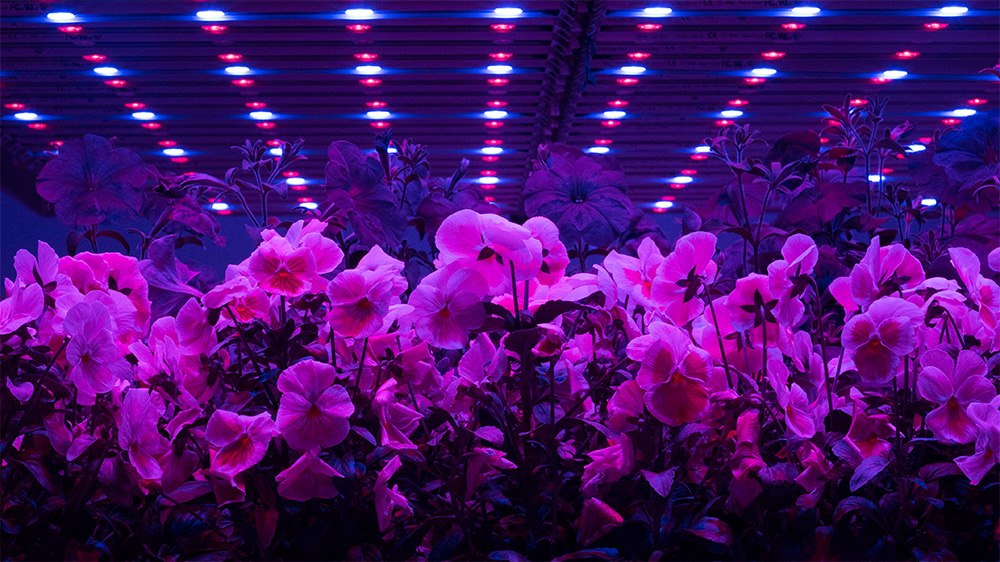
Adjusting the light wavelengths and intensity of LED lighting can improve crop yields and quality, latest research findings show.
Research at the Stockbridge Technology Centre (STC), funded by AHDB Horticulture, has shown that by adjusting the quantity and quality of LED lighting, improvements in both the yields and the quality of ornamentals and other crops can be achieved, demonstrating that the benefits of growing with LEDs goes beyond simple energy savings.
The research at STC aims to gain a greater understanding about the underlying biology of plant responses to various lighting mixes and what this means in terms of plant morphology and speed of growth.
Experiments
Light quality experiments have focused on establishing whether it is possible to produce plants that are both compact and early flowering, which many ornamental growers strive for, through combining red, blue and far-red in the light spectrum in defined proportions.
These experiments have been undertaken without any natural light source.
Significantly, where there is no natural light, findings show it is possible to produce bedding plants, in this case pansy and petunia, that are both compact and early flowering without the need for chemical plant growth regulators, by selecting LED output for an optimum blue percentage and red:far-red ratio.
An in-depth economic analysis of using LED lights to grow plants will be undertaken during the final year of the project
Wayne Brough, Knowledge Transfer Manager at AHDB says: "Our aim is not to come up with specific recipes for specific responses in particular crops, but to generate baseline information that can be built on in further R&D, either by AHDB or by individual businesses themselves, avoiding too many blind alleys."
